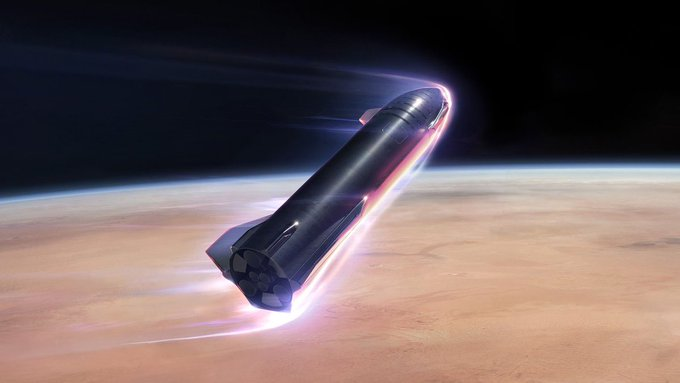Ever wonder why SpaceX chose the belly flop approach for Starship’s landing instead of a glide like the Space Shuttle? It’s quite brilliant, really!
The Space Shuttle glided like a heavy airplane, using its wings to generate lift in Earth’s dense atmosphere, swooping down to a runway at ~350 km/h. It worked Earth but is useless for Mars.
Starship, on the other hand, uses its “belly” as a giant air brake, falling horizontally to maximize drag and slow down.
This belly flop is genius for a few reasons: - Works on Mars and Earth: Mars’ atmosphere must thinner than Earth’s. The Shuttle’s glide needed thick air for lift, but Starship’s belly flop relies on drag, effective even in Mars’ thin CO₂ atmosphere. The belly flop uses less propellant as it slows the ship down before the final landing burn.
-
Saves Fuel for Reusability: By using atmospheric drag to shed most of its speed, Starship needs only a small amount of propellant load for the flip and vertical landing.
-
No Runways Needed: The Shuttle needed 4.6 km runways, but there aren't any on Mars. Starship’s propulsive landing allows pinpoint touchdowns on unprepared surfaces - Earth pads or Martian dirt.
-
Simpler, Tougher Design: Starship’s stainless steel body and four flaps (not wings) handle reentry heat and abrasive Martian dust, unlike the Shuttle’s fragile tiles and aluminum frame. Flaps give precise control in any atmosphere, making Starship a true interplanetary workhorse.
The belly flop isn’t just quirky - it’s a game-changer for SpaceX’s 2026 Mars missions. While the Shuttle was an Earth-bound marvel, Starship’s drag-and-drop landing is built for the Red Planet and beyond.
What do you think? Good choice or to risky?

